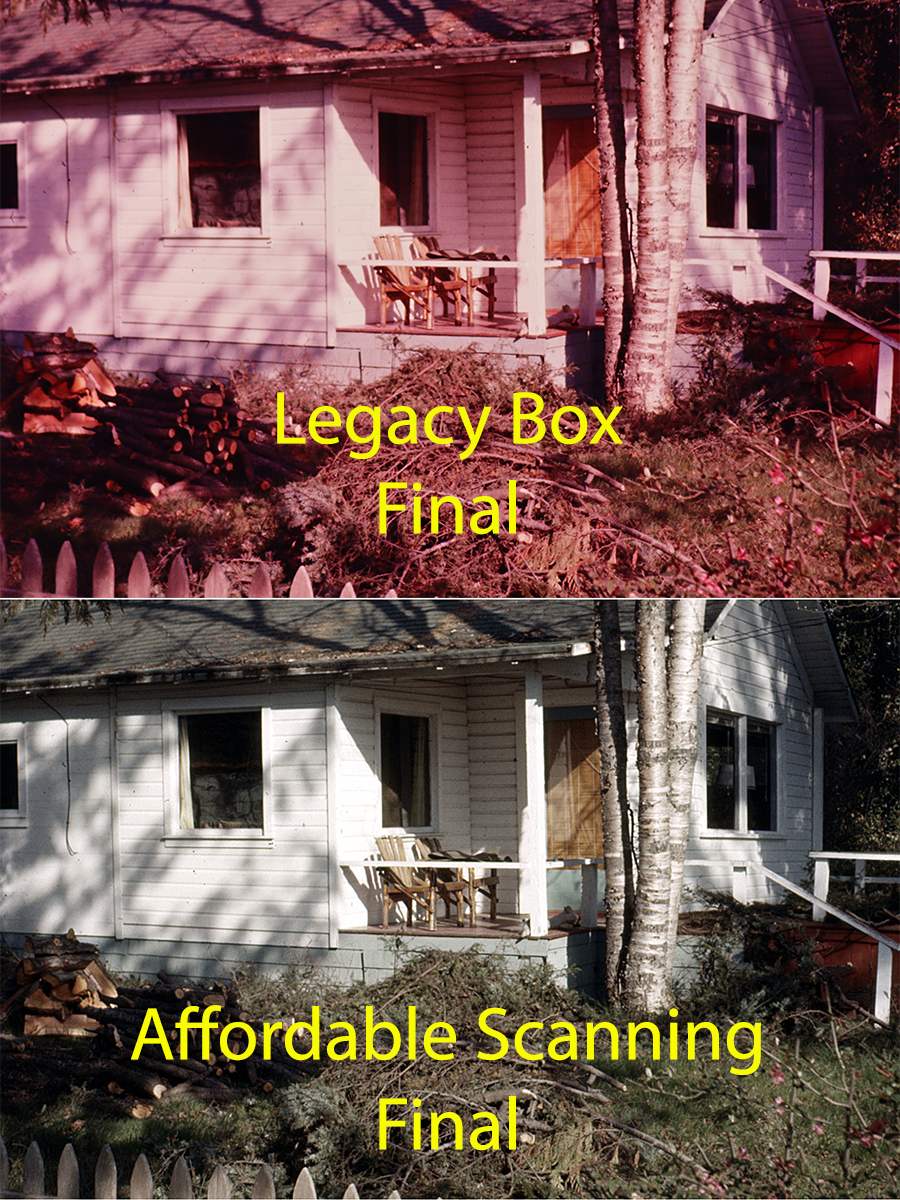Expert Slide and Photo Scanning Since 2002.
4,000 ppi Scanning and Premium Photoshop
Editing On Every Scan. 49¢ most slides.
We also can make PRINTS from your Slides.
California 35mm Slide, Photo & Film Scanning

All Scanning companies will NOT give you the same results, Click Here.
While we do NOT have a local office in your state, Affordable Scanning Services LLC has provided services for customers all over California, Los Angeles, San Diego, San Jose, San Francisco, Long Beach, Fresno, Sacramento, Oakland, Santa Ana, Anaheim, and the United States and Canada since 2002. In all that time we have worked with multiple people, university's and businesses with many different needs and end results. Our customers are very important to us and they are our best salespeople.
Some of the newer scanning companies, unable to compete with our services, have resorted to sending their customer's 35mm slides, photos and films to India or other third world countries. That is bad enough but what we think is really underhanded, is that they are not up front about this minor little detail. Most of their customers have no idea that their family photo collction is being loaded into a cargo plane and flown 7,000 miles over the ocean to India. And that may be the safest part of the trip.
At Affordable 35mm Slide Scanning, your job does not leave our premises,in Waupun Wisconsin, until we return ship to you. We treat your precious photo collection just like it was our own and I can tell you for certain, that we would never be sending our heirloom family photos to a thirdworld sweatshop in order to save a few dollars.
All jobs are worked by 100% USA citizens who are talented and skillful and they really are artists at heart. They work your family photos just like they were working their very own photos. We realize that this is the only time that you are going to be converting your slides and photos to digital and we are going to make it a good Experience for you.
"Settled by successive waves of arrivals during the last 10,000 years, California was one of the most culturally and linguistically diverse areas in pre-Columbian North America; the area was inhabited by more than 70 distinct groups of Native Americans. Large, settled populations lived on the coast and hunted sea mammals, fished for salmon, and gathered shellfish, while groups in the interior hunted terrestrial game and gathered nuts, acorns, and berries. California groups also were diverse in their political organization with bands, tribes, villages, and on the resource-rich coasts, large chiefdoms, such as the Chumash, Pomo and Salinan. Trade, intermarriage, and military alliances fostered many social and economic relationships among the diverse groups.
The first European to explore the coast as far north as the Russian River was the Portuguese Joao Rodrigues Cabrilho, in 1542, sailing for the Spanish Empire. Some 37 years later, the English explorer Francis Drake also explored and claimed an undefined portion of the California coast in 1579. Spanish traders made unintended visits with the Manila Galleons on their return trips from the Philippines beginning in 1565. Sebastián Vizcaíno explored and mapped the coast of California in 1602 for New Spain.
Spanish missionaries began setting up twenty-three California Missions along the coast of what became known as Alta California (Upper California), together with small towns and presidios. The first mission in Alta California was established at San Diego in 1769. In 1821, the Mexican War of Independence gave Mexico (including California), independence from Spain; for the next twenty-five years, Alta California remained a remote northern province of the nation of Mexico. Cattle ranches, or ranchos, emerged as the dominant institutions of Mexican California. After Mexican independence from Spain, the chain of missions became the property of the Mexican government, and were secularized by 1832. The ranchos developed under ownership by Californios (Spanish-speaking Californians) who had received land grants and traded cowhides and tallow with Boston merchants.
Beginning in the 1820s, trappers and settlers from the United States and Canada began to arrive in Northern California, harbingers of the great changes that would later sweep the Mexican territory. These new arrivals used the Siskiyou Trail, California Trail, Oregon Trail and Old Spanish Trail to cross the rugged mountains and harsh deserts surrounding California. In this period, Imperial Russia explored the California coast, and established a trading post at Fort Ross.
The Bear Flag of the Republic of CaliforniaIn 1846, at the outset of the Mexican-American War (1846-1848), the California Republic was founded and the Bear Flag (featuring a bear, a star, a red stripe, and the words "California Republic") was flown in an attempt to control Northern California. The attempt to form this republic came to a sudden end, however, when Commodore John D. Sloat of the United States Navy sailed into Monterey Bay and began the military occupation of California by the United States. Northern California capitulated in less than a month to the US forces.
Following a series of defensive battles in Southern California, including; The Siege of Los Angeles, the Battle of Dominguez Rancho, the Battle of San Pascual, the Battle of Rio San Gabriel and the Battle of La Mesa, the Treaty of Cahuenga was signed by the Californios on January 13, 1847, securing American control in California.
Following the Treaty of Guadalupe Hidalgo that ended the war, the region was divided between Mexico and the United States; the western territory of Alta California, was to become the U.S. state of California, and the Arizona, Nevada, Colorado and Utah Territories, while the lower region of California, Baja California, remained in the possession of Mexico.
In 1848, the non-native population of California has been estimated to be no more than 15,000. But after gold was discovered, the population burgeoned with U.S. citizens, Europeans, and other immigrants during the great California Gold Rush. On September 9, 1850, as part of the Compromise of 1850, California was admitted to the United States as a free state (one in which slavery was prohibited).
The seat of government for California under Mexican rule was located at Monterey from 1777 until 1835, when Mexican authorities abandoned California, leaving their missions and military forts behind.[10] In 1849, the Constitutional Convention was first held there. Among the duties was the task of determining the location for the new State capital. The first legislative sessions were held in San Jose (1850-1851). Subsequent locations included Vallejo (1852-1853), and nearby Benicia (1853-1854), although these locations eventually proved to be inadequate as well. The capital has been located in Sacramento since 1854.
At first, travel between California and the central and eastern parts of the United States was time-consuming and dangerous. A more direct connection came in 1869 with the completion of the First Transcontinental Railroad. After this rail link was established, hundreds of thousands of U.S. citizens came west, where new Californians were discovering that land in the state, if irrigated during the dry summer months, was extremely well-suited to fruit cultivation and agriculture in general. Vast expanses of wheat and other cereal crops, vegetable crops, cotton, and nut and fruit trees were grown (including oranges in Southern California), and the foundation was laid for the state's prodigious agricultural production in the Central Valley and elsewhere.
During the early 20th century, migration to California accelerated with the completion of major transcontinental highways like the Lincoln Highway and Route 66. In the period from 1900 to 1965, the population grew from fewer than one million to become the most populous state in the Union. From 1965 to the present, the population changed radically and became one of the most diverse in the world. The state is regarded as a world center of technology and engineering businesses, the entertainment and music industries, and of U.S. agricultural production."
From:
https://en.wikipedia.org/wiki/California
|
About Our Company Copyright 2024 |
|
Email: Click Here After hours you will get a quicker response by using email. We answer email at ALL hours. Telephone messages are replied to during business hours. Affordable Scanning Services LLC 400 Bittersweet Lane Waupun, WI 53963
|

 Home
Home Order Forms
Order Forms



